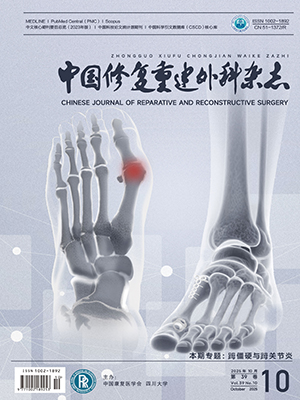Objective To review recent research progress in the use of auxiliary components of nerve conduits for the treatment of peripheral nerve injuries. Methods An extensive review of recent domestic and international literature was conducted to evaluate the role of auxiliary components in nerve conduits for peripheral nerve repair, with a focus on their effects and underlying mechanisms. Results By incorporating auxiliary components such as bioactive molecules, therapeutic cells, and their derivatives, nerve conduits can create a more biomimetic regenerative microenvironment. This is achieved by providing neurotrophic support, modulating the immune microenvironment, improving blood and oxygen supply, and offering directional guidance for nerve regeneration. Consequently, the nerve conduit is transformed from a simple physical scaffold into an active, bio-functional repair system, which enhances the effectiveness for PNI. Conclusion While nerve conduits augmented with auxiliary components demonstrate improved effectiveness, further advancements are required in drug delivery systems and the integration of cellular components. Moreover, most current studies are based on animal or in vitro experiments. Randomized controlled clinical trials are necessary to validate their clinical effectiveness.
Citation:
NONG Chaocao, LIN Haodong. Research progress in auxiliary components of nerve conduit for treating peripheral nerve injuries. Chinese Journal of Reparative and Reconstructive Surgery, 2025, 39(8): 1061-1067. doi: 10.7507/1002-1892.202505083
Copy
Copyright © the editorial department of Chinese Journal of Reparative and Reconstructive Surgery of West China Medical Publisher. All rights reserved
| 1. |
|
| 2. |
|
| 3. |
|
| 4. |
|
| 5. |
|
| 6. |
|
| 7. |
|
| 8. |
|
| 9. |
|
| 10. |
|
| 11. |
|
| 12. |
|
| 13. |
|
| 14. |
Zhang F, Wu X, Li Q, et al. Dual growth factor methacrylic alginate microgels combined with chitosan-based conduits facilitate peripheral nerve repair. Int J Biol Macromol, 2024, 268(Pt 1): 131594. doi: 10.1016/j.ijbiomac.2024.131594.
|
| 15. |
|
| 16. |
|
| 17. |
|
| 18. |
Dietzmeyer N, Huang Z, Schüning T, et al. In vivo and in vitro evaluation of a novel hyaluronic acid-laminin hydrogel as luminal filler and carrier system for genetically engineered Schwann cells in critical gap length tubular peripheral nerve graft in rats. Cell Transplant, 2020, 29: 963689720910095. doi: 10.1177/0963689720910095.
|
| 19. |
|
| 20. |
|
| 21. |
|
| 22. |
|
| 23. |
|
| 24. |
|
| 25. |
|
| 26. |
|
| 27. |
|
| 28. |
|
| 29. |
|
| 30. |
|
| 31. |
|
| 32. |
|
| 33. |
|
| 34. |
|
| 35. |
|
| 36. |
|
| 37. |
|
| 38. |
|
| 39. |
|
| 40. |
|
| 41. |
|
| 42. |
|
| 43. |
|
| 44. |
|
| 45. |
|
| 46. |
|
| 47. |
|
| 48. |
|
| 49. |
|
| 50. |
|
| 51. |
|
| 52. |
|
| 53. |
|
| 54. |
|
| 55. |
|
| 56. |
|
| 57. |
|
| 58. |
|
| 59. |
|
| 60. |
|
- 1.
- 2.
- 3.
- 4.
- 5.
- 6.
- 7.
- 8.
- 9.
- 10.
- 11.
- 12.
- 13.
- 14. Zhang F, Wu X, Li Q, et al. Dual growth factor methacrylic alginate microgels combined with chitosan-based conduits facilitate peripheral nerve repair. Int J Biol Macromol, 2024, 268(Pt 1): 131594. doi: 10.1016/j.ijbiomac.2024.131594.
- 15.
- 16.
- 17.
- 18. Dietzmeyer N, Huang Z, Schüning T, et al. In vivo and in vitro evaluation of a novel hyaluronic acid-laminin hydrogel as luminal filler and carrier system for genetically engineered Schwann cells in critical gap length tubular peripheral nerve graft in rats. Cell Transplant, 2020, 29: 963689720910095. doi: 10.1177/0963689720910095.
- 19.
- 20.
- 21.
- 22.
- 23.
- 24.
- 25.
- 26.
- 27.
- 28.
- 29.
- 30.
- 31.
- 32.
- 33.
- 34.
- 35.
- 36.
- 37.
- 38.
- 39.
- 40.
- 41.
- 42.
- 43.
- 44.
- 45.
- 46.
- 47.
- 48.
- 49.
- 50.
- 51.
- 52.
- 53.
- 54.
- 55.
- 56.
- 57.
- 58.
- 59.
- 60.




